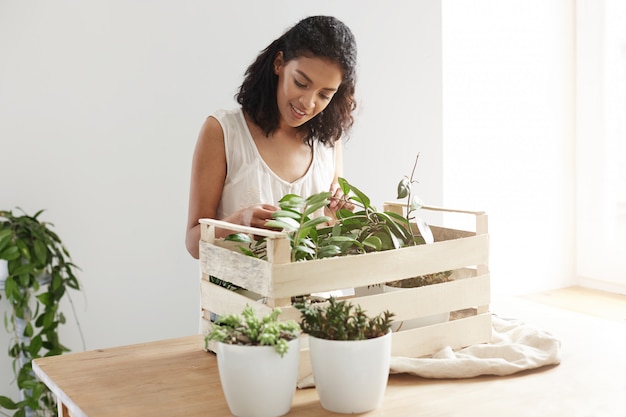
When my oldest child was young, we lived in a small one-bedroom apartment. Now, we’ve moved into a house with a backyard, but I’ve always been passionate about growing plants at home. If you’re looking to garden in a small space, these apartment-friendly tips could be just what you need.
So, why go through all the trouble of indoor gardening with limited space? For starters, studies suggest that gardening can add years to your life—up to 14 years, in fact! Plus, have you seen how much organic produce costs these days at the supermarket?
You can easily grow a variety of herbs, vegetables, and air-purifying houseplants indoors. It’s really satisfying to have fresh herbs on your kitchen windowsill or to see window boxes flourishing on a balcony. Whether you live in an apartment, small house, or anywhere with limited outdoor space, these suggestions can be helpful.
Even renters with limited space can embrace gardening! Here are some ideas to make the most of small spaces.
First, assess your space. Identify areas with natural sunlight. Do you have a balcony, a small patch of backyard, or a sunny windowsill? Determine which spots will work best for growing plants.
Next, consider the types of plants you want to grow. Don’t bother growing veggies nobody in your family will eat, even if they fit well in a pot. Think about what you’ll actually use. You might want an herb garden, vegetable garden, or just houseplants. Even beginners can succeed with low-maintenance plants like cacti.
Good soil is key. Unhealthy soil won’t help your plants thrive. If you’re using containers, go for potting mix—it has the right balance of drainage and air. Regular garden soil doesn’t work well in containers and isn’t recommended. Many lawn and garden stores carry organic potting mix, or you can make your own.
When space is tight, think vertically. Use planters and containers with vertical trellises to maximize vertical space. Wooden or metal stakes, wire panels, or sturdy lattices can support the plants.
Choose trailing plants instead of bushy ones. Here are some great options for trellis growing:
Similar to vertical gardening, container gardening involves a pot or container that can fit almost anywhere. Small pots are great for windowsills, while larger ones can sit on stands or the floor.
Consider the plant’s needs for water and sunlight. Some vegetables and herbs prefer partial or full sun, while others thrive in indirect light.
Think outside the typical planter. A wooden pallet against an outdoor wall makes an effective container garden. Hanging baskets from ceiling hooks are also great for growing flowers, herbs, or salad greens.
Large plants, like citrus trees, can also thrive in containers. Just be aware that they might get heavy and difficult to move, especially if indoor sunlight shifts throughout the year. Ideally, citrus plants need 10+ hours of sunlight from a south-facing window.
If you have some yard space, try starting a garden there. Even if you’re not allowed to dig up soil, containers work just fine. While I have a larger yard now, I still enjoy using metal containers for outdoor plants. Choose containers that fit your space, whether big or small.
When growing multiple plants in smaller containers, pick ones with similar light, soil, and water needs. It’s a great way to cultivate herbs and other edibles.
Balconies also offer great gardening opportunities. Place containers along the railing for climbing plants, or hang window boxes. If you’re worried about city air pollution, consider non-edible plants instead.
One of my favorite things is my plant wall in the bedroom. Not only does it make me happy each morning, but it also purifies the air. I use macrame plant holders on the wall, but shelves or premade fabric pocket systems work too.
For a DIY version, you can hang a wire cattle panel and attach planters. I have a DIY succulent garden in a cute wooden box on the wall for simplicity.
Always check building rules before drilling holes everywhere!
If your apartment doesn’t have much natural light, create your own. Good-quality grow lights are ideal for herbs, microgreens, and veggies. Adjust the distance of the light to avoid making plants grow thin and unstable.
A simple option is to mount a grow light under kitchen cabinets and place plants beneath them. Certain plants do well in countertop gardens.
For a hassle-free option, consider premade setups like Aerogarden’s Family Harvest indoor garden. It’s affordable and great for growing herbs and veggies in the kitchen.
There are extra considerations for indoor and balcony gardening:
– Weight: Make sure containers aren’t too heavy for balconies or shelves.
– Water: Most plants need regular watering. Use a large watering can or a small hose attached to a sink, and protect surfaces from drips.
– Wind: Outdoor containers should withstand wind. Consider a windscreen for delicate plants.
– Fertilizer: Healthy soil is essential, especially in containers. Some plants need specific soil types.
– Bugs: Indoor plants might get pests. Quarantine affected plants to protect the healthy ones.
Almost anyone can create a small-space garden, whether you grow radishes, snake plants, or basil. Start small to keep things manageable. Hopefully, these ideas inspire you to start your own mini garden!
What plants do you love growing? Which ones have you successfully grown in containers? Let me know!

